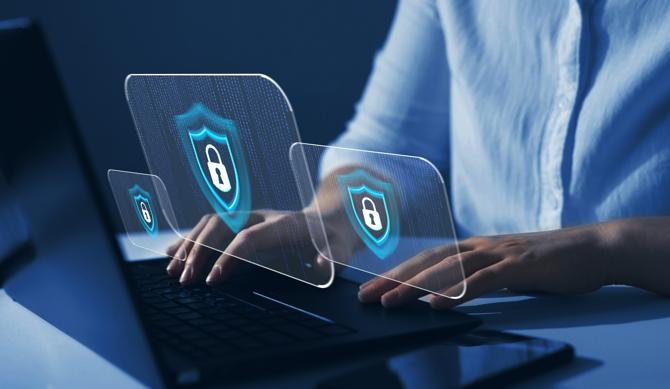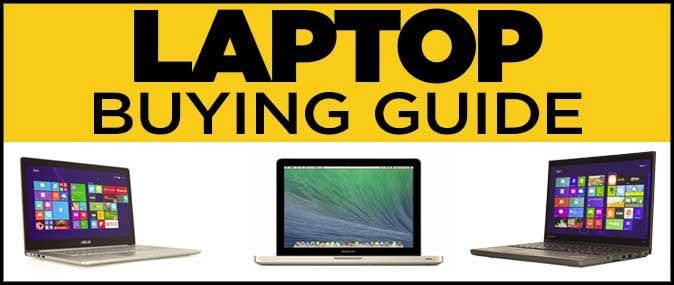Welcome to our comprehensive guide on antivirus and anti-malware software, where we’ll delve into the essentials of protecting your digital world from malicious threats. In today’s interconnected landscape, cybersecurity is a paramount concern, making it crucial to understand the intricacies of these protective tools. Let’s explore Antivirus and Anti-Malware Technology Overview, from their definitions to practical steps in choosing, installing, and maintaining them.
Additionally, we’ll highlight Psero, an online store that stands out as a reliable source for quality laptops. Let’s delve into the world of cybersecurity and explore how Psero complements your efforts in maintaining a secure and efficient digital experience.
The need for robust cybersecurity measures is more critical than ever. Antivirus and anti-malware software stand as sentinels, guarding our digital realms against a plethora of malicious threats. This comprehensive guide aims to unravel the intricacies of these security solutions, providing a detailed understanding from their core functions to practical steps in choosing, installing, and maintaining them.

Understanding Antivirus and Anti-malware Software:
Defining Antivirus Software: Antivirus software is a specialized program designed to detect, prevent, and remove malicious software, commonly known as malware. It acts as a shield against a spectrum of threats, including viruses, worms, trojans, spyware, and ransomware. The primary goal is to safeguard your computer or device from potential harm by identifying and neutralizing malicious code.
Exploring Anti-malware Solutions:
While antivirus software primarily focuses on viruses, anti-malware solutions provide a broader defense against various types of malicious software. Anti-malware tools encompass a range of protective measures, including real-time scanning, behavioral analysis, and heuristic detection. This broader approach aims to combat evolving threats beyond traditional viruses.
Differentiating Between Viruses, Malware, and Other Threats: Viruses, malware, and other digital threats are terms often used interchangeably, but they have distinct characteristics. Viruses are self-replicating programs that attach themselves to legitimate files, while malware is a broader term encompassing any malicious software. Understanding these differences is crucial for selecting the appropriate security solution.
Why Antivirus and Anti-malware Protection Matters:
The Evolving Landscape of Cyber Threats: Cyber threats are dynamic, evolving entities that constantly adapt to circumvent security measures. As technology advances, so do the techniques employed by cybercriminals. Antivirus and anti-malware protection serve as vital defenses against this ever-changing threat landscape.
Risks and Consequences of Cyber Attacks:
The consequences of a successful cyber attack can be severe, ranging from data breaches and financial loss to identity theft and system compromise. Recognizing the risks highlights the urgency of implementing robust security measures to safeguard personal and sensitive information.
The Role of Antivirus in Preventing Infections:
Antivirus software plays a pivotal role in preventing infections by detecting and neutralizing malicious code before it can cause harm. Through signature-based detection, heuristic analysis, and real-time scanning, antivirus tools act as vigilant gatekeepers, ensuring the integrity of your digital environment.
Choosing the Right Security Solution:
Factors to Consider: Needs, Budget, and Device Type: Selecting the right security solution requires careful consideration of individual needs, budget constraints, and the type of device in use. Whether you’re a casual user, a business professional, or a tech enthusiast, understanding your requirements lays the foundation for effective cybersecurity.
Popular Antivirus Software Options:
A myriad of antivirus software options exists, each with its strengths and features. Norton, McAfee, Bitdefender, and Avast are among the popular choices, offering varying levels of protection, additional features, and user interfaces. Exploring reviews and conducting thorough research aids in making an informed decision.
Features to Look for in Anti-malware Solutions:
Anti-malware solutions should go beyond basic virus detection. Look for features such as real-time scanning, behavior-based analysis, sandboxing, and automatic updates. Comprehensive anti-malware tools provide layered defenses against emerging threats.

Installing Antivirus and Anti-malware Software:
Step-by-Step Guide for Installation: Installing antivirus and anti-malware software is a straightforward process, often guided by user-friendly interfaces. Download the chosen software from the official website, run the installer, and follow the on-screen instructions. Ensure compatibility with your operating system and carefully configure settings for optimal protection.
- Configuring Settings for Optimal Protection: After installation, configuring the settings becomes crucial for tailoring the security solution to your specific needs. Customize scanning schedules, threat notification preferences, and quarantine actions. Regularly check for updates to ensure your software stays abreast of the latest threats.
- Regular Updates and Software Maintenance: Consistent updates are vital for the effectiveness of antivirus and anti-malware tools. Most software automatically updates when connected to the internet, but manual checks ensure your device has the utmost protection. Regular maintenance, including scheduled scans and system checks, contributes to ongoing security.
Free vs. Paid Antivirus Solutions:
Pros and Cons of Free Antivirus Software: Free antivirus software provides essential protection for users on a budget. While it offers basic defense against common threats, free versions often lack advanced features found in paid alternatives. Users must weigh the benefits of cost savings against potential limitations.
- Advanced Features in Paid Security Suites: Paid antivirus solutions typically offer advanced features such as internet security, firewalls, anti-phishing tools, and ransomware protection. Investing in a paid security suite enhances the overall protection of your device, providing a comprehensive defense against a broader range of threats.
- Striking the Right Balance for Your Needs: Finding the right balance between cost and features is key to selecting the appropriate antivirus solution. Evaluate your security requirements and consider the additional features offered in paid versions. For comprehensive protection, especially in professional settings, investing in a paid antivirus solution is advisable.
- Built-in Security: Windows Defender and More:
- Windows Defender: A Built-in Antivirus Solution: Windows Defender, integrated into Microsoft Windows operating systems, serves as a default antivirus solution. Offering real-time protection, automatic updates, and seamless integration, Windows Defender provides a baseline defense for Windows users. While competent, its feature set may not match the depth of some third-party antivirus options.
- Security Features in Other Operating Systems: Various operating systems, including macOS and Linux distributions, come equipped with built-in security features. While these built-in tools provide a foundational level of protection, users may still benefit from additional antivirus or anti-malware solutions to enhance security further.
Optimizing Security Practices Beyond Software:
- Safe Browsing Habits: Practicing safe browsing habits is a fundamental aspect of cybersecurity. Avoid clicking on suspicious links, downloading files from unknown sources, and providing personal information on unsecured websites. Vigilance in online behavior complements the protective capabilities of antivirus software.
- Keeping Software and Operating Systems Updated: Regularly updating software and operating systems is crucial for closing potential security vulnerabilities. Software updates often include patches to address known vulnerabilities, enhancing the overall security of your device.
- Additional Measures: Firewalls, VPNs, and Password Managers: Supplementing antivirus protection with additional measures fortifies your digital defenses. Firewalls monitor and control incoming and outgoing network traffic, while VPNs (Virtual Private Networks) encrypt internet connections, providing enhanced privacy. Password managers contribute to secure password practices, reducing the risk of unauthorized access.
Regular Scanning and System Maintenance:
- Understanding Scanning Options: Antivirus software offers various scanning options, including quick scans, full system scans, and custom scans. Quick scans focus on critical areas, full system scans examine the entire device, and custom scans allow users to target specific files or folders. Understanding these options aids in optimizing scanning practices.
- Scheduled Scans and Real-time Protection: Scheduling regular scans ensures consistent monitoring for potential threats. Many antivirus tools also offer real-time protection, actively scanning files and applications as they are accessed or downloaded. This proactive approach minimizes the risk of infections.
- Cleaning and Quarantine Procedures: In the event of a detected threat, antivirus software typically provides cleaning and quarantine options. Cleaning removes the threat from infected files, while quarantine isolates the affected files to prevent further harm. Familiarizing yourself with these procedures ensures effective threat management.
- Troubleshooting and Dealing with False Positives:
- Addressing Performance Issues: Antivirus software, while crucial for security, can sometimes impact system performance. Addressing performance issues involves adjusting settings, optimizing scan schedules, and ensuring compatibility with other software. Balancing security and performance is key to a seamless user experience.
- Handling False Positives Effectively: False positives, instances where legitimate files are mistakenly identified as threats, can occur with antivirus software. Handling false positives involves reviewing quarantine logs, restoring flagged files, and reporting potential inaccuracies to the antivirus provider. Effective communication with the antivirus support team aids in resolution.
- Seeking Help: Customer Support and Online Resources: In cases of technical issues or uncertainties, seeking help from customer support and utilizing online resources becomes essential. Most antivirus providers offer customer support channels, including online chat, email, and phone support. Online forums, knowledge bases, and community discussions provide additional insights and troubleshooting guidance.
The Future of Antivirus and Anti-malware Technology:
- Machine Learning and Artificial Intelligence: The future of antivirus and anti-malware technology is intricately linked with advancements in machine learning and artificial intelligence. These technologies enable security solutions to adapt and learn from emerging threats, enhancing their proactive capabilities and detection accuracy.
- Predictive Analysis in Cybersecurity: Predictive analysis leverages data analytics to forecast potential cyber threats. Antivirus software employing predictive analysis anticipates evolving attack patterns, enabling preemptive measures to counteract emerging threats before they can cause harm.
Emerging Threats and Evolving Defense Strategies:
As cyber threats continue to evolve, defense strategies must also adapt. Antivirus and anti-malware solutions evolve to combat emerging threats, incorporating new technologies, detection methods, and response mechanisms. Staying abreast of cybersecurity trends ensures a proactive approach to digital protection.
Advanced Features in Paid Security Suites:
Paid antivirus solutions, with features such as internet security, firewalls, and ransomware protection, enhance overall protection. Psero offers laptops capable of supporting these advanced security features, providing a comprehensive defense.
Conclusion: Antivirus and Anti-Malware Technology Overview
In conclusion, this comprehensive guide serves as a roadmap for navigating the intricate landscape of antivirus and anti-malware software. Armed with knowledge, users can make informed decisions, implement best practices, and fortify their digital defenses. By understanding the core principles, choosing suitable solutions, and embracing evolving technologies, individuals and organizations can navigate the dynamic realm of cybersecurity with confidence.
